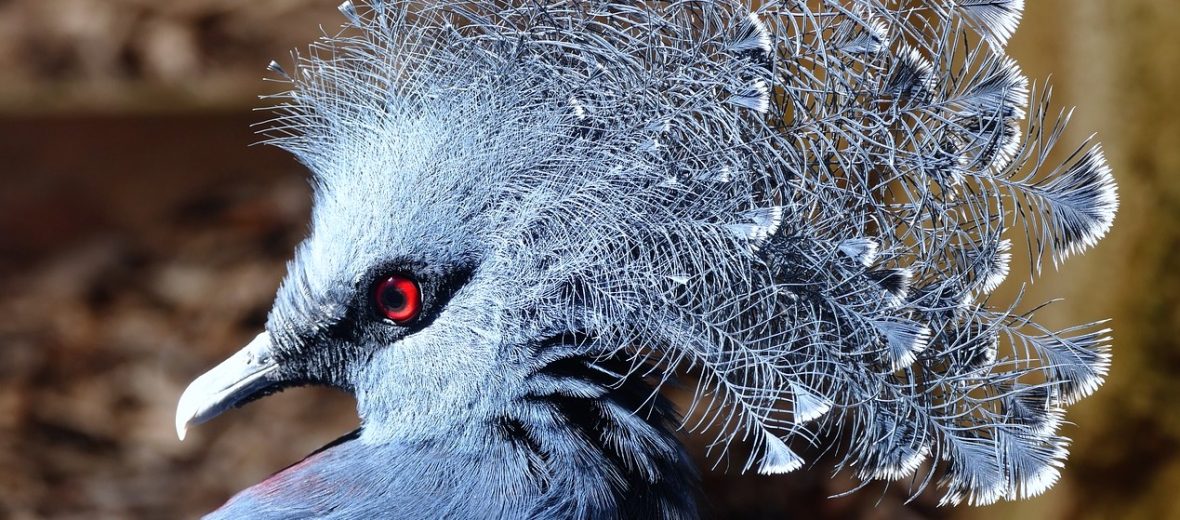
The Victoria crowned pigeon is the largest pigeon species in the world. They can be found in northern New Guinea and the surrounding islands, as well as in portions of Indonesia. These birds prefer swamp forests, lowland moist forest locations – that were previous alluvial plains, and also sago forests. Due to habitat destruction, hunting, and trapping, these beautiful birds are listed as Near Threatened by the IUCN. Their populations are also decreasing.
First the Stats…
Scientific name: Goura victoria
Weight: Up to 4.5 lbs.
Length: Up to 28 inches
Wingspan: Up to 23 inches
Lifespan: Up to 25 years
Now on to the Facts!
1.) These birds are named after the British monarch Queen Victoria.
2.) Victoria crowned pigeons prefer to walk, rather than fly.
3.) A group of pigeons is called a kit, loft, passel, band, dropping, flight, or plague.
4.) They are gregarious and travel in small groups in search of food.
5.) These critters are diurnal (active during the day).
But wait, there’s more on the Victoria crowned pigeon!
6.) Males are aggressive towards 1 another, during the mating season. They display their dominance by puffing up their chest, spreading their wings, and charging at each other.
7.) Various calls are produced, such as a deep “hoota-hoota-hoota-hoota-hoota” sound, a “ummm” & “hmmm” sound, and a “whup-up, whup-up, whup-up” call.
Did you know…?
Only pigeons and flamingos have the capability of producing crop milk. This is produced by both parents and is fed to their chick during their first few days of life.
8.) They feast on fallen fruits, seeds, berries, and sometimes small invertebrates.
9.) Victoria crowned pigeons are monogamous (mate for life).
10.) Females lay a single egg that hatches in 30 days.
But wait, there’s still more on the Victoria crowned pigeon!
11.) Like many birds, their chick is born altricial (blind and helpless).
12.) These pigeons are closely related to the extinct dodo.
13.) Victoria crowned pigeons are unique in that they possess neither an oil gland nor a gall bladder.
Now a Short Victoria Crowned Pigeon Video!
This video talks about crowned pigeons, in general.
Be sure to share & comment below! Also, check out the Critter Science YouTube channel. Videos added regularly!
Want to suggest a critter for me to write about? Let me know here.
Think you know a lot about critters? Try your hand at these fun, free quizzes:



